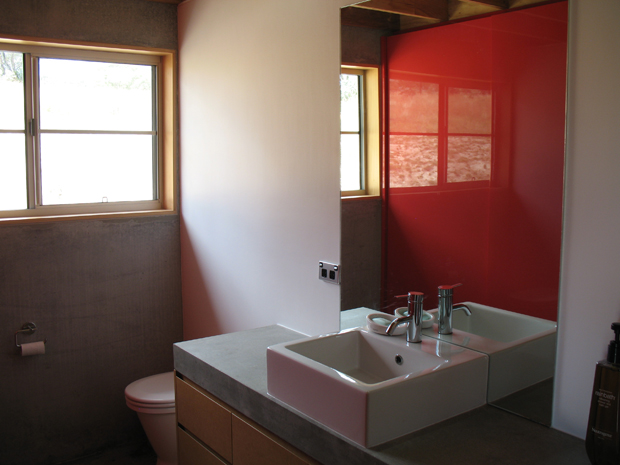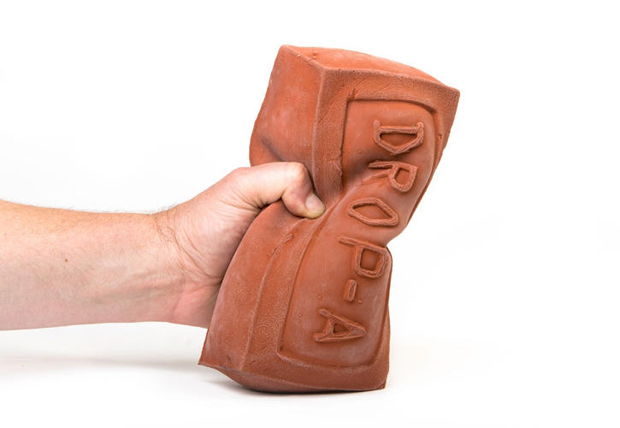In 1980, Bruce Thompson of Caroma developed a toilet cistern with two buttons and two flush volumes – one measuring 11 litres, the other 5.5 litres. Named the Duoset cistern, the innovation would go on to save 32,000 litres of water a year for each household in a small South Australian town during a trial, and later-on pave the way for making dual-flush toilets compulsory for new buildings in every state in Australia but New South Wales.
Today, although toilet flushing continues to represent a significant proportion of the water supplied to Australian cities and towns, our toilets are relatively water-efficient, thanks to further advancements in sanitary ware that minimise the amount of water being wasted, and the introduction of schemes such as the Water Efficiency Labelling and Standards (WELS), which is compulsory for all lavatory and urinal equipment.
According to a 2008 report by the Institute for Sustainable Futures at the University of Technology, Sydney, the average flush volume of a toilet sold then was about half of what it had been 25 years earlier. Dual-flush cisterns offering nine litres full flush and 4.5 litres half flush – not too dissimilar to the sizes Thompson invented – are the least efficient products that can be sold, and about 22 per cent of water savings under the WELS scheme comes from toilets and lavatory equipment.
The advantages of these initiatives shouldn’t need to be stated (but we’ll say it anyway): reducing water consumption in the bathroom – where about 40 per cent of all water is consumed in the home, a quarter of which is flushed away – helps households save on their water bills. In commercial settings, these measures also contribute to lower operating costs and a smaller carbon footprint.
There are other environmental benefits to using water-efficient sanitary ware, including reducing the amount of energy that would have been needed for aerating and pumping when waste from flushed toilet systems go through to waste water treatment plants. A changing climate, with reports of falling annual rainfall, also brings home the importance of being frugal with a much-needed resource.
However, our cisterns are not just getting smaller to increase water-efficiency in the bathroom. In some cases, we’ve even given up the use of water altogether and found ways to make the ‘waterless toilet’ more family-friendly, and dare we say, an elegant addition to the bathroom. Here, we explore four products and innovations that seek to minimise the amount of water we are sending to the sewages.
Composting toilets
While there is growing awareness about the importance of an efficient use of resources, the average consumer hasn’t really taken to waterless toilets, especially if the product in question is a composting toilet (CT). Typically recommended for homes in water-scarce areas such as the mid-north region of New South Wales, CTs treat human waste using natural decomposition processes, usually without the use of a water flush system. The waste is retained until they are broken down to a safer, more stable product, and the material buried.
“The composting toilet has come a long way from the pit latrine,” the YourHome guide notes. “If appropriately designed, they conserve precious water resources and keep effluent and pollutants out of waterways and the general environment.
“They can also reduce the site restrictions, and pollution and nutrient problems, of systems such as septic tanks.”
Some CTs have electric or wind driven heating/drying units to assist with the decomposition process, which is influenced by factors such as “temperature, pH, desiccation and digestion by invertebrates” – all of which takes place over an extended period. There are two key system arrangements: batch systems, which comprise two or more containers that alternate in use, and continual composting systems, which feature a single container permanently fitted under the toilet seat.
If installed correctly and well-maintained, CTs should not smell, with some manufacturers like Ecoflo even claiming that their products actually emit less odour than you would encounter with a normal flushing toilet.
 Clivus Multrum’s waterless composting toilet was installed at the Krawarree House by Strine Design (pictured left & below), a rural retreat that is completely off the grid. According to the architects, this Blackwater system only requires a moving fan, which ensures that fresh oxygen is always moving through to facilitate optimum composting and minimal odour.
Clivus Multrum’s waterless composting toilet was installed at the Krawarree House by Strine Design (pictured left & below), a rural retreat that is completely off the grid. According to the architects, this Blackwater system only requires a moving fan, which ensures that fresh oxygen is always moving through to facilitate optimum composting and minimal odour.

“The maintenance [of the system] includes minimal water, all kitchen compost improving healthy bacterial growth, and depending on use, some rearrangement of compost material,” says architect Ric Butt.
While it was difficult to get local council authorities to approve the waterless composting toilet system, Clivus Multrum is an accredited system certified by the Health Authority of each state.
Drop-A-Brick
Dropping a brick into the toilet cistern is the traditional Aussie way of saving water in a drought (lowering the volume of water needed in refill) , but standard bricks often disintegrate over time and have been known to damage plumbing systems. Taking the idea and responding to the current Californian drought, San Francisco company Level 2 Industries has designed a rubber bio-based rubber brick filled with an eco-friendly hydro gel that solidifies when water is added to it.

This rubber brick displaces water when placed in the tank and “tricks” the toilet into using less water for every flush. The extra weight of a solidified brick is enough to displace about two litres of water, the product designers say. For a family of four, this amount adds up to approximately 190 litres a week – not a huge amount of water compared to a highly water-efficient toilet, but still more than if a single-flush toilet did without it.
The brick itself has a low carbon footprint, with the bio-based rubber casing made from the sap of sustainable Hevea trees. Each brick costs about US$15, and is suitable for people who own toilets with 1.6 gallon (6 litres) volume tanks or more. The product, however, is so far only available in the US.
The Caroma Profile 5 Toilet
The Caroma Profile 5 toilet is Australia’s first 5 Star toilet suite featuring a cistern with a dual-flush push button and spout combination, which allows the fresh water used to wash hands to be recycled for flushing.

Developed in collaboration with Brisbane City Council over a decade, the Profile 5 discharges water from the cistern during flushing while fresh water simultaneously enters the cistern separately via an inlet valve connected to the water supply. Rather than fill the cistern tank, the valve re-directs fresh water to the spout, and the water that is used here flows from the basin into the cistern tank.

Being space as well as water-efficient, the suite is Watermark approved and requires no additional installation beyond that of a regular toilet. It is suitable for new and existing applications, but the use of recycled water is not recommended.
The product was also banned in Queensland for two years after its initial launch, from 2009 to 2011, over an interpretation of the Plumbing and Drainage Act relating to the use of the product. The ban has since been lifted following results from extensive testing showing that the water used for hand washing in the cistern constitutes no increased health risk to the user compared to a regular suite and separate basin.
Desert Cube Waterless Urinal System
 Desert Cubes are 100 per cent biodegradable waterless and odour free urinal cubes that sit at the base of a urinal and release beneficial microbes as they dissolve over several weeks. Working with a turned-off water supply, the cube’s microbes trigger a breakdown of organic matter inside the drain, and “interfere with the bacterial digestion that produces unpleasant odours”. This controls odours and the build-up of uric scale, but should be complemented by daily cleaning with Desert Wash room Cleaner, which contains proteins to activate the microbes.
Desert Cubes are 100 per cent biodegradable waterless and odour free urinal cubes that sit at the base of a urinal and release beneficial microbes as they dissolve over several weeks. Working with a turned-off water supply, the cube’s microbes trigger a breakdown of organic matter inside the drain, and “interfere with the bacterial digestion that produces unpleasant odours”. This controls odours and the build-up of uric scale, but should be complemented by daily cleaning with Desert Wash room Cleaner, which contains proteins to activate the microbes.
The Cube System is ideal for septic systems, and according to Adelaide-based manufacturer Desert, a waterless urinal is a more hygienic choice for public or commercial wash rooms:
“Waterless urinals are designed to dry out between uses, unlike the surfaces of wet urinals, which are constantly damp. Bacteria and viruses thrive in moisture but simply perish when dried. When you convert to the Desert Cube Waterless Urinal System, your urinal becomes touch-free, reducing the transfer of pathogens to hands. The conventional flushing mechanisms in wet urinals are a dangerous point of cross-contamination because they require direct hand contact from each user."
The Cubes should be used with the Desert No Flush urinal, which itself is made of porcelain with silver nano technology.

